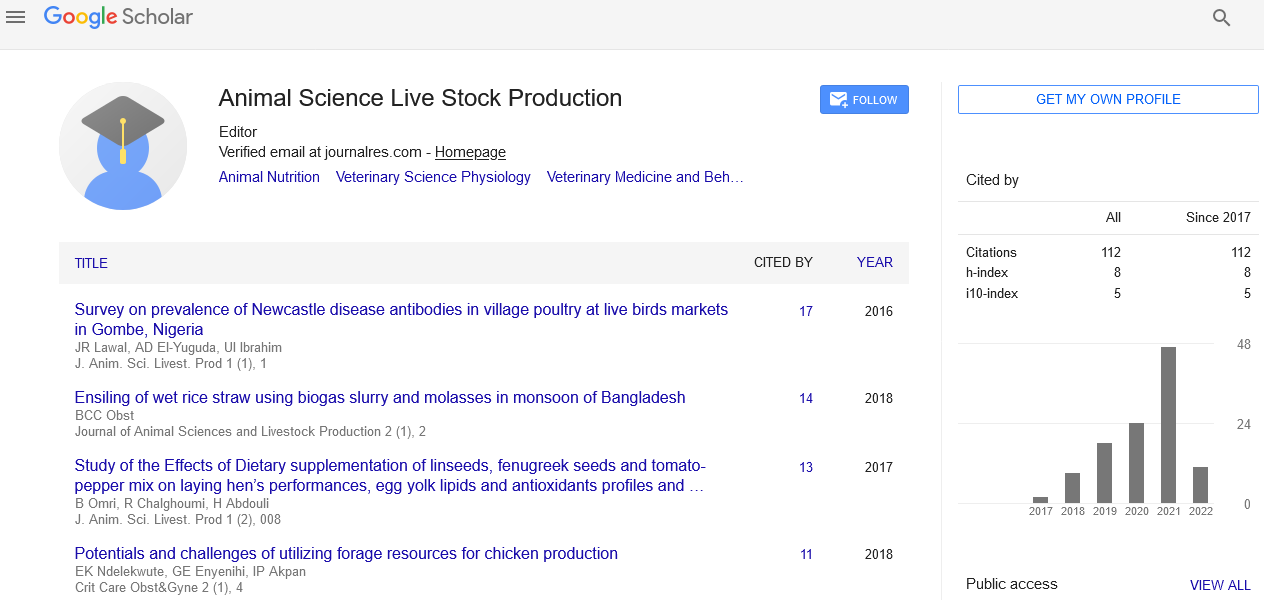Commentary - (2024) Volume 8, Issue 4
The Importance of Cattle: A Vital Resource for Agriculture and Industry
Fang Huang*
Department of Animal Sciences, Tsinghua University, China
*Correspondence:
Fang Huang,
Department of Animal Sciences, Tsinghua University,
China,
Email:
Received: 02-Dec-2024, Manuscript No. IPJASLP-24-22164;
Editor assigned: 04-Dec-2024, Pre QC No. IPJASLP-24-22164 (PQ);
Reviewed: 18-Dec-2024, QC No. IPJASLP-24-22164;
Revised: 23-Dec-2024, Manuscript No. IPJASLP-24-22164 (R);
Published:
30-Dec-2024, DOI: 10.36648/2577-0594.8.4.34
Description
Cattle, domesticated large herbivores, have been central to
human civilization for thousands of years. They are among the
most important livestock species, contributing significantly to
agriculture, economy, and culture. From providing food and
clothing to playing vital roles in farming and transportation,
cattle are indispensable to many societies worldwide. Over the
centuries, cattle have been selectively bred to serve various
purposes. Different breeds have been developed for their
ability to produce milk, meat, or to serve as draught animals.
Today, there are hundreds of cattle breeds adapted to diverse
climates and agricultural systems, ranging from the hardy
breeds found in cold climates to the heat-resistant varieties
raised in tropical regions. Cattle have traditionally played a
significant role in the agricultural economy. As grazing animals,
they contribute to maintaining the balance of grasslands
and help in nutrient cycling by converting grass into manure,
which can be used as a natural fertilizer. Cattle manure is rich
in nutrients, which can enhance soil fertility, improving crop
yields and maintaining soil health. In many small-scale farming
communities, cattle serve as both a source of food and a means
of sustainable land management. One of the most well-known
roles of cattle is their provision of meat and milk. Beef and dairy
are staples in many diets worldwide. Beef provides essential
proteins, vitamins, and minerals, while dairy products such as
milk, cheese, and butter are rich sources of calcium and other
nutrients vital for human health. However, the environmental
impact of such large-scale production, including deforestation
and greenhouse gas emissions, has sparked debates about
sustainable farming practices and alternative protein sources.
Cattle farming is a key economic sector, particularly in rural
areas where it provides livelihoods to millions of people.
Beyond beef and dairy, cattle are also sources of leather, wool,
and even medicinal products like insulin, derived from cattle
pancreas. The leather industry, in particular, relies heavily on
cattle hides to produce clothing, footwear, and accessories,
making cattle a valuable commodity in the global market. The
livestock industry also contributes to job creation in the sectors
of feed production, veterinary care, and transportation, further
supporting local economies. In many developing countries,
cattle serve as a form of wealth and a means of trade, offering
economic security and a way for farmers to invest in their future.
Despite their immense value, cattle farming faces several
challenges. Environmental concerns, such as the environmental
footprint of large-scale beef production, deforestation linked
to grazing land, and methane emissions, have led to calls for
more sustainable farming practices. In addition, the ethical
treatment of cattle in industrial farming systems has raised
questions about animal welfare, leading to efforts to improve
living conditions and promote humane practices. The future
of cattle farming lies in balancing the demand for meat and
dairy with the need for sustainability and ethical responsibility.
Innovations in alternative proteins, plant-based diets, and
more efficient farming methods may help mitigate some of the
challenges facing the cattle industry today. Cattle have been,
and continue to be, a cornerstone of agriculture, industry, and
culture worldwide. They are an essential resource for food
production, economic growth, and agricultural sustainability.
However, with the increasing awareness of environmental and
ethical concerns, it is crucial that the cattle industry evolves to
meet the demands of the future, ensuring that cattle farming
remains a beneficial and responsible practice for generations
to come.
Acknowledgement
None.
Conflict Of Interest
None.
Citation: Huang F (2024) The Importance of Cattle: A Vital Resource for Agriculture and Industry. J Animal Sci. 8:34.
Copyright: © 2024 Huang F. This is an open-access article distributed under the terms of the Creative Commons Attribution License, which permits unrestricted use, distribution, and reproduction in any medium, provided the original author and source are credited.

